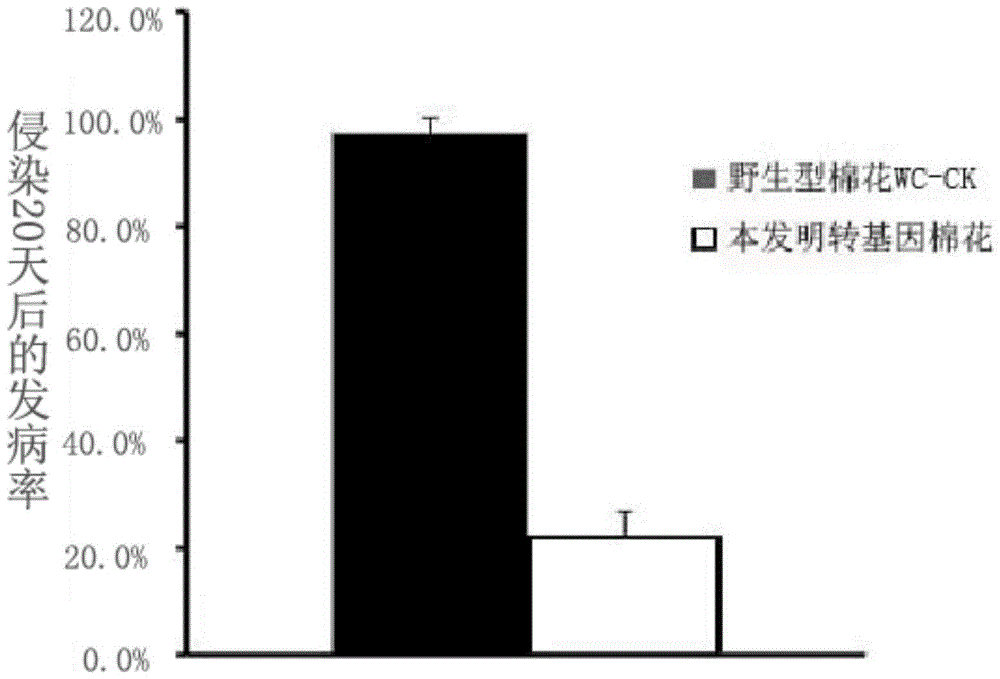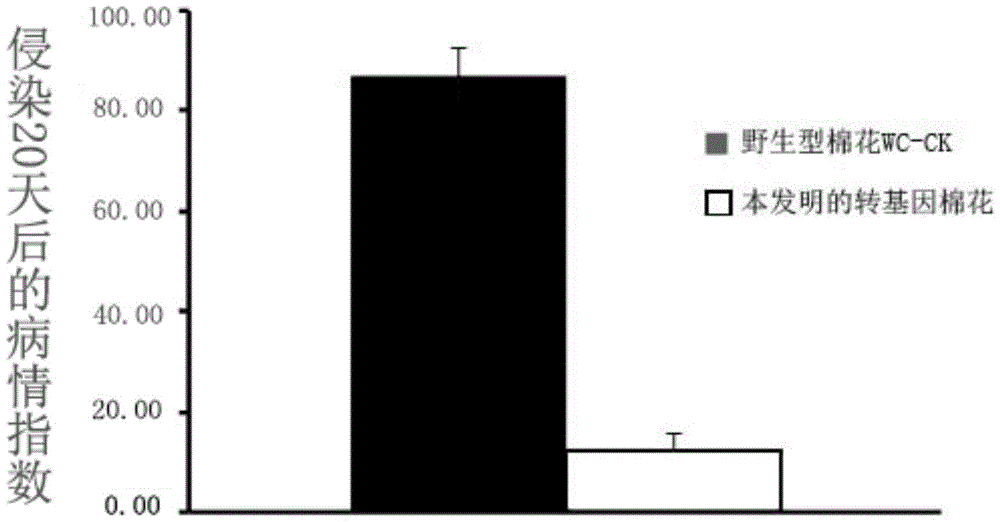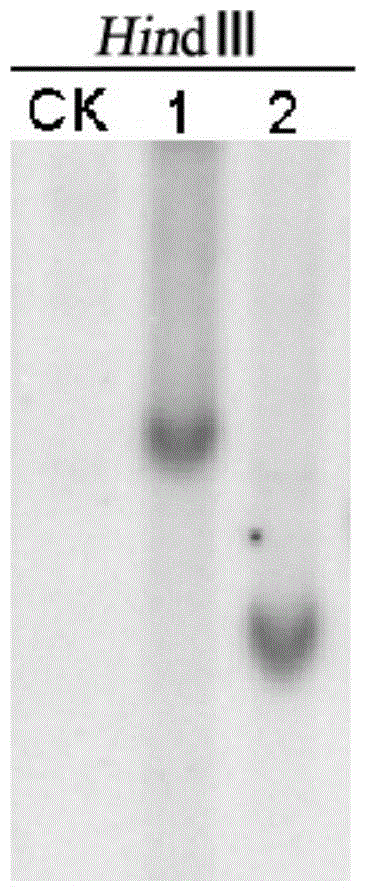Method for cultivating cotton resisting verticillium dahliae
A technology for resistance to verticillium wilt and cotton, applied in the biological field, can solve the problems of staying and not yet conducting large-scale field trials.
- Summary
- Abstract
- Description
- Claims
- Application Information
AI Technical Summary
Problems solved by technology
Method used
Image
Examples
Embodiment 1
[0042] Example 1 Construction of VDH1i expression vector
[0043] Utilize CTAB method to extract Verticillium dahliae V592 genomic DNA, utilize following primer to use this genomic DNA as template, carry out PCR amplification: Upstream primer (5'→3'): G GATCC TTCGTGTATTCGGAGTTCTG downstream primer (underlined BamHI restriction site) (5'→3'): G AATTC GATTGCTCTGTTTGCTGGA (the underline is the EcoRI restriction site). The PCR product was connected to the pGEM-T vector (purchased from TIANGEN Company, Cat. No. VT202-02) to obtain a recombinant vector. Using the above upstream primers and pGEM-T vector universal reverse primer M13R (5'→3': CAGGAAACAGCTATGACC), the recombinant vector inserted in the forward direction was identified by PCR amplification and sequenced, and the sequencing results showed that it contained the sequence shown in SEQ ID NO.1 The recombinant vector of the DNA molecule was named pGEMT-VDH1i1. Use the following primers to perform PCR amplification with...
Embodiment 2
[0044] Example 2 Agrobacterium-mediated transformation of wild-type cotton WC-CK
[0045] 1. Transformation of Agrobacterium with VdH1 RNAi expression vector
[0046] The constructed VdH1 RNAi expression vector was introduced into Agrobacterium competent cells by electric shock transformation, and the specific operations were as follows:
[0047] (1) Agrobacterium competent cells EHA105 were taken out at -80°C and thawed on ice.
[0048] (2) 1 μl of VdH1 RNAi expression vector plasmid was injected into the Agrobacterium liquid, and placed on ice.
[0049] (3) Pour the mixed Agrobacterium solution into the electric shock cup (BIO-RAD company, article number 165-2089), and electric shock for 2 seconds under 1500v voltage (BIO-RAD company, Gene Pulser Xcell electroporator).
[0050] (4) Add LB into the electric shock cup, suck out the mixture and pour it into the EP tube.
[0051] (5) Shake in a shaker at 28°C and 160 rpm for 45 minutes.
[0052] (6) Spread the bacterial liqu...
Embodiment 3
[0060] Example 3 Southern blot determines the copy number of the inserted gene in transgenic cotton
[0061] A. The CTAB method was used to extract the genomic DNA of the transgenic cotton and wild-type cotton WC-CK in Example 1.
[0062] B. The extracted DNA was digested with HindⅢ
[0063] Digestion system: DNA 100μg, 10×buffer 40μl, enzyme 35μl, add H 2 O to 400 μl, 37 ° C, 24 hours. Take 5ul electrophoresis to check whether the enzyme digestion is complete. Add 240μl isopropanol to precipitate the digested product, and finally dissolve it in about 40μl ddH 2 Add Loading Buffer to O; keep warm at 65°C for 5-10 minutes before sample application.
[0064] C. Electrophoresis
[0065] 0.9% agar (0.5×TBE); 50V, 18-24 hours; finally reverse electrophoresis for 5min.
[0066] D. Gel treatment
[0067] (1) After electrophoresis, take pictures; ddH 2 O rinse gel;
[0068] (2) Soak the gel in 0.2M HCl, and shake gently on a decolorizing shaker for about 20 minutes until the ...
PUM
 Login to View More
Login to View More Abstract
Description
Claims
Application Information
 Login to View More
Login to View More - R&D
- Intellectual Property
- Life Sciences
- Materials
- Tech Scout
- Unparalleled Data Quality
- Higher Quality Content
- 60% Fewer Hallucinations
Browse by: Latest US Patents, China's latest patents, Technical Efficacy Thesaurus, Application Domain, Technology Topic, Popular Technical Reports.
© 2025 PatSnap. All rights reserved.Legal|Privacy policy|Modern Slavery Act Transparency Statement|Sitemap|About US| Contact US: help@patsnap.com



